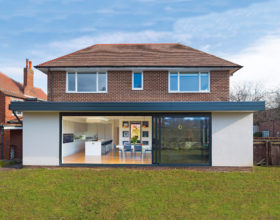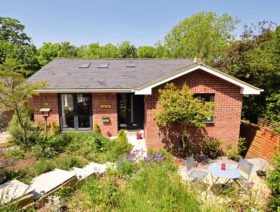
Sign up to our virtual training course today!
Use code BUILD for 20% off
Sign up to our virtual training course today!
Use code BUILD for 20% offOnce Helen and Jonny Brown had decided to extend their Victorian terraced home in London, they went full throttle into finding an architect and discussing their ideas – and then completely changed what they set out to do.
They were originally looking for a house to renovate, but this turned into a fruitless two-year search.
“We had contemplated the possibility of doing up a really rundown property, but the one we
found required significant amounts of work. This included adding insulation and a new roof, plus its beautiful, large single glazed windows needed replacing,” says Guy.
“It would’ve been lovely to go ahead with it, but it was beyond our tolerance levels and budget.”
Unable to find anything suitable on the market, the couple turned to their current house in the Lambeth borough instead.
They had lived there for five years when they began discussions with their architect, in September 2014, which meant they knew their home inside-out.
During their time there, they’d put in a new kitchen and bathroom, and decorated various areas. However, lack of space in this terrace had become an issue now they had two children, Finlay and Lochie.
“The three bedrooms upstairs were fine for us,” says Helen. “But on the ground floor we were overrun with toys and the dark kitchen felt too cramped for us to enjoy.”
Helen turned to online platform East Dulwich Forum, where neighbours share tips and advice, to ask for local architects recommendations. She approached three to discuss her ideas and settled on Darren Oldfield Architects.
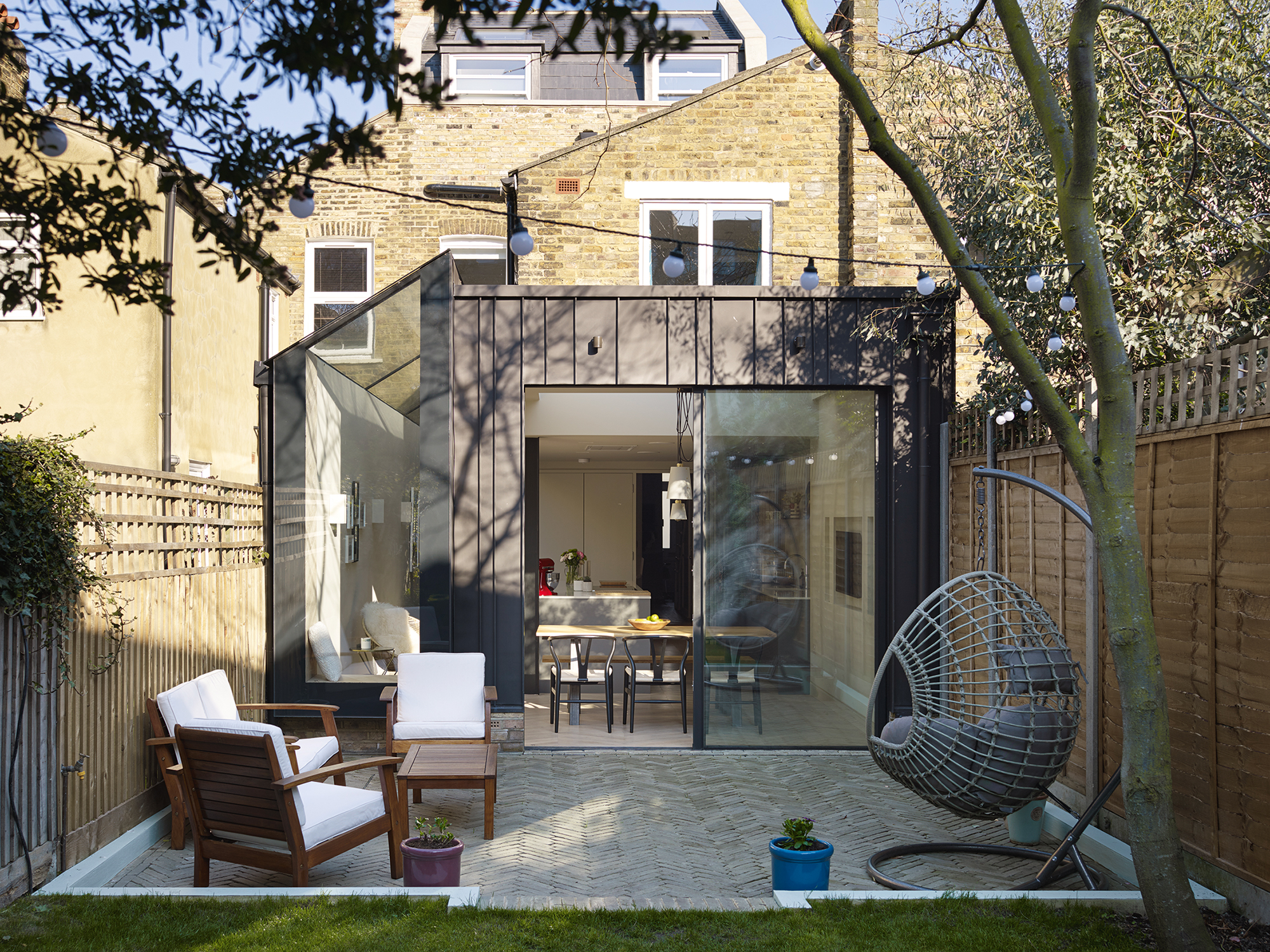
The couple built a contemporary wraparound extension
“We wanted to future-proof our house and make the changes look really lovely,” says Helen. “Darren’s work was creative and he listened to what we wanted. We felt comfortable we could work with him.”
The architect was also very familiar with Lambeth Council’s tight planning policies and advised the couple on how they could create space within the confines of permitted development (PD) rights.
“As we knew that our neighbours’ hadn’t got permission for a loft conversion, we didn’t even suggest this to Darren,” says Helen. “We liked the thought of building a wraparound extension but he told us he’d had a similar design refused by the local authority, so we put that idea to one side too.”
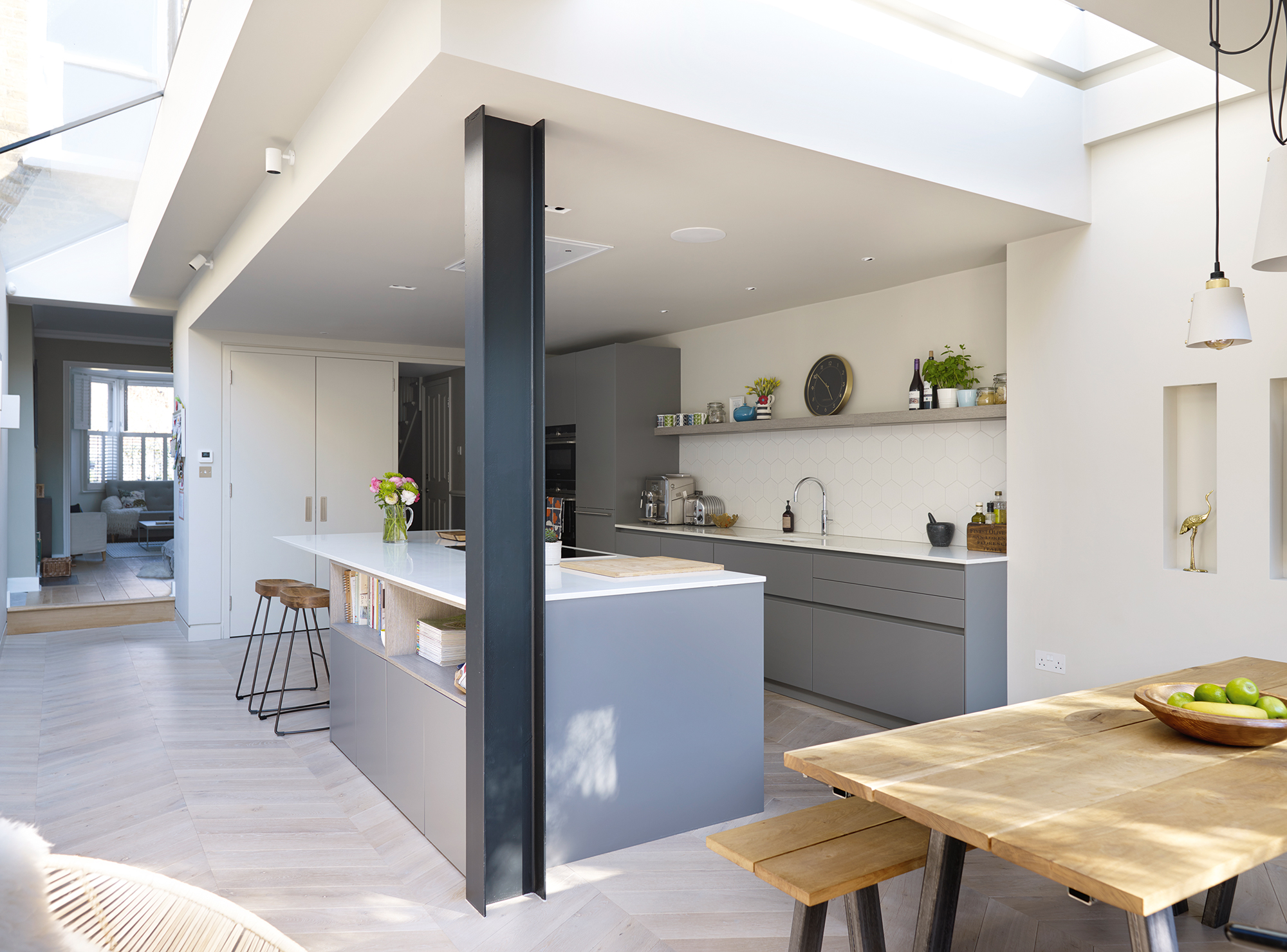
The kitchen is now a large, light-filled space
Darren came back with a design that would expand the kitchen into the side return and create a separate rear extension and a bespoke garden room at the back of the property.
“We really liked the contemporary feel of his scheme,” says Helen. “He’d drawn a glass roof on the side of the addition and two cubes clad in timber at the rear and in the garden facing each other. It was a great way to max out on the allowable space we had.”
Hiring a local designer with experience and connections in the area paid off, as they were able to keep up to date with the latest rules.
Towards the end of January 2015, as the couple was working through the drawings with Darren, he brought exciting news from the local authority to the table.
Lambeth councillors had begun consulting on new planning legislation that would allow wrap-around extensions and mansard loft conversions. After discussing the situation, the couple decided it was best to put their design on hold for eight months while the new legislation came into force.
“We were truly delighted when Darren told us,” says Helen. “Although we were happy with his first proposal, there was still a lot of compromise as we were losing square footage space between the two extensions that weren’t allowed to join.
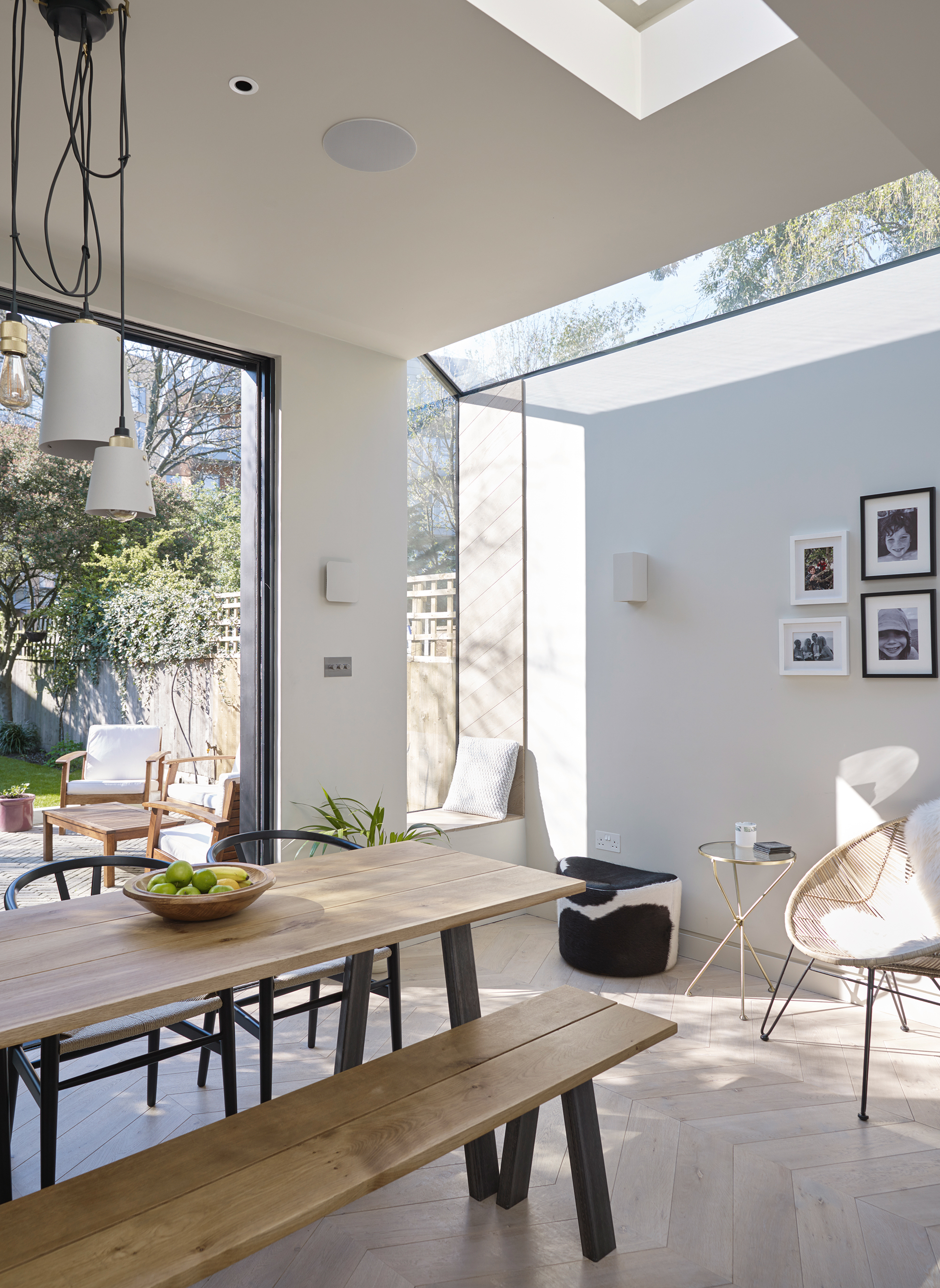
The architectural window seat is one of Helen and Jonny’s favourite features in the house
“Having a fourth bedroom hadn’t been essential to us, but when we heard we could have the mansard roof we decided to go for it.”
The new rules meant going back to the drawing board for Darren, as well as additional design and build expenses for the couple – estimated at around 25% more than the original £150,000 budget.
“We didn’t want the cost allowance to be too restrictive as we were creating a place for us to live for a long time, rather that somewhere to sell on,” says Helen. “We were very lucky as house prices had risen over the years, so it was about how comfortable we felt with borrowing that bit more on our mortgage.”
Very little from the original design stayed in the end, with the exception of the structural glazed roof on the side extension.
For the couple, the best ideas to come out of the changes were the rooflight and the full height fixed glazing for the corner window seat, where the additions are now able to join as a wraparound setup.
“We decided full-width glass doors across the back were not an option, as we wanted something with more architectural interest,” says Helen. “Darren achieved that with the window seat clad in the same oak chevron we have on the floor, which gives it a sleek finish.”
By November the drawings were ready to be submitted to planning. Much to everyone’s relief, the application was given the go ahead in January 2016.
Helen and Jonny had already made up their mind to keep their architect on until the project was finished. Darren put together the tender documents to various builders and carefully discussed the three quotes that came back.
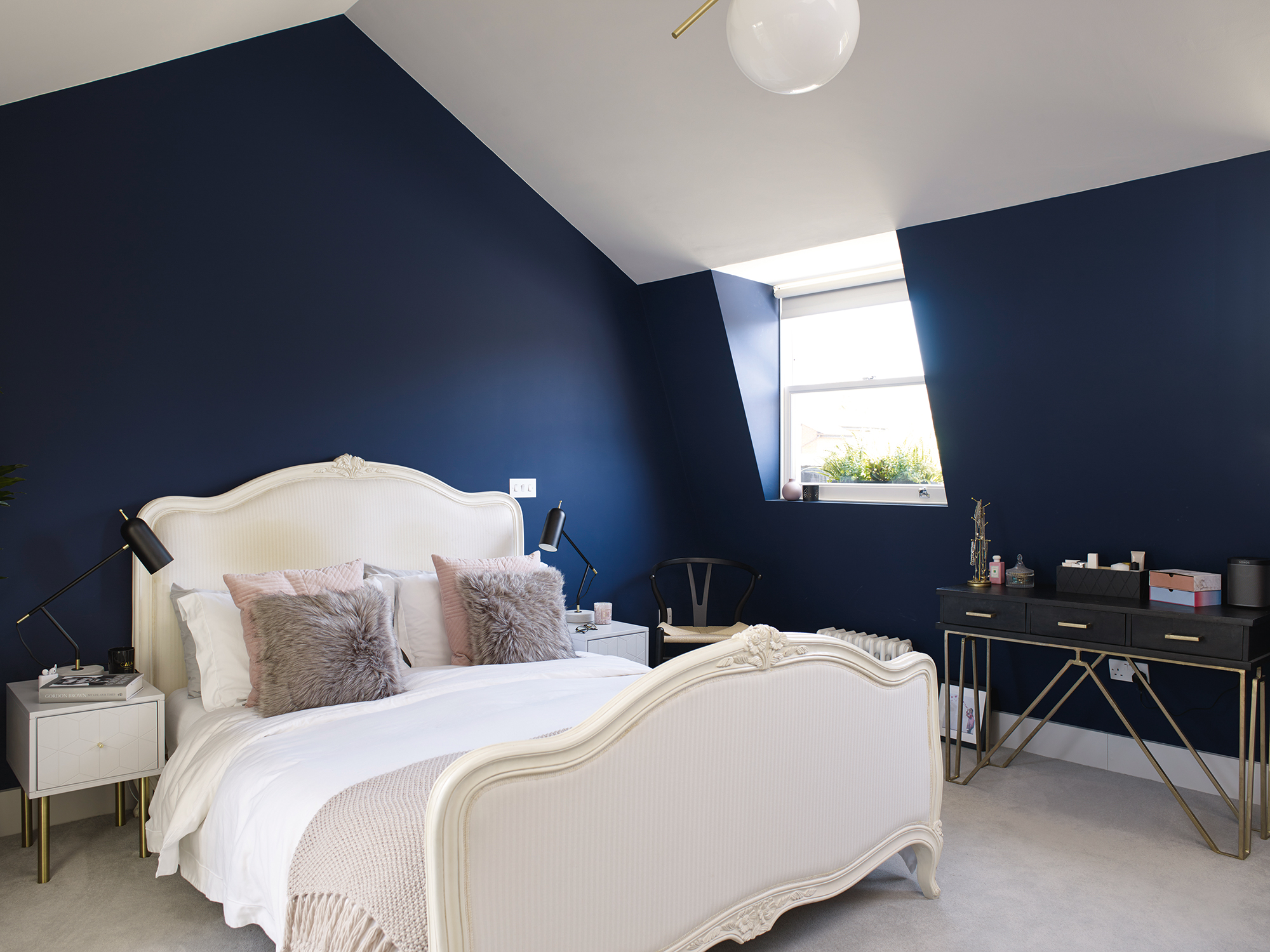
The mansard loft conversion allows a pitched ceiling and a comfortable ensuite
“One of the contractors gave a good sales pitch about how they’d manage the scheme and liaise with us and the architect, but when we delved a bit deeper there were elements on the quote that were missed out or we felt were overpriced,” says Helen.
“When we got into discussions, the relationship didn’t feel quite right so we pulled the plug and used Martin’s Builders, who’d been recommended to us by a friend and we knew could work to a high specification.”
In September that year, Darren took charge of the project and the family moved out to allow for the work to proceed.
Rather conveniently, Helen’s sister had gone travelling for six months and they were able to squeeze into her one-bedroom flat nearby.
“Jonny and I were busy working and looking after the children. It was really important to us that we had a high-end finish,” says Helen. “We’d never done a scheme like it and the project felt quite complex. Although it did cost more to keep Darren on, we wanted Martin’s Builders to complete the job exactly to his design.”
By and large the project unfolded smoothly. The biggest problem arose at the start when the trades discovered that the party wall foundation needed underpinning – but even this disruption had an upside.
At the outset, the couple had explored lowering the kitchen floor to increase headroom but scrapped the idea due to costs.
“In the end we had to lower the floor to do the underpinning, which meant spending around £4,000 more than we’d planned,” says Helen. “I love the effect though, because we’ve improved the head height by 15cm and that’s made all the difference to the space.”
The original roof came off the house and was replaced with a mansard, allowing for the spacious master bedroom and ensuite.
The Browns organised the design and purchase of their new kitchen and ensuite following their architect’s guidance on where to source quality tap and sanitaryware brands that would last.
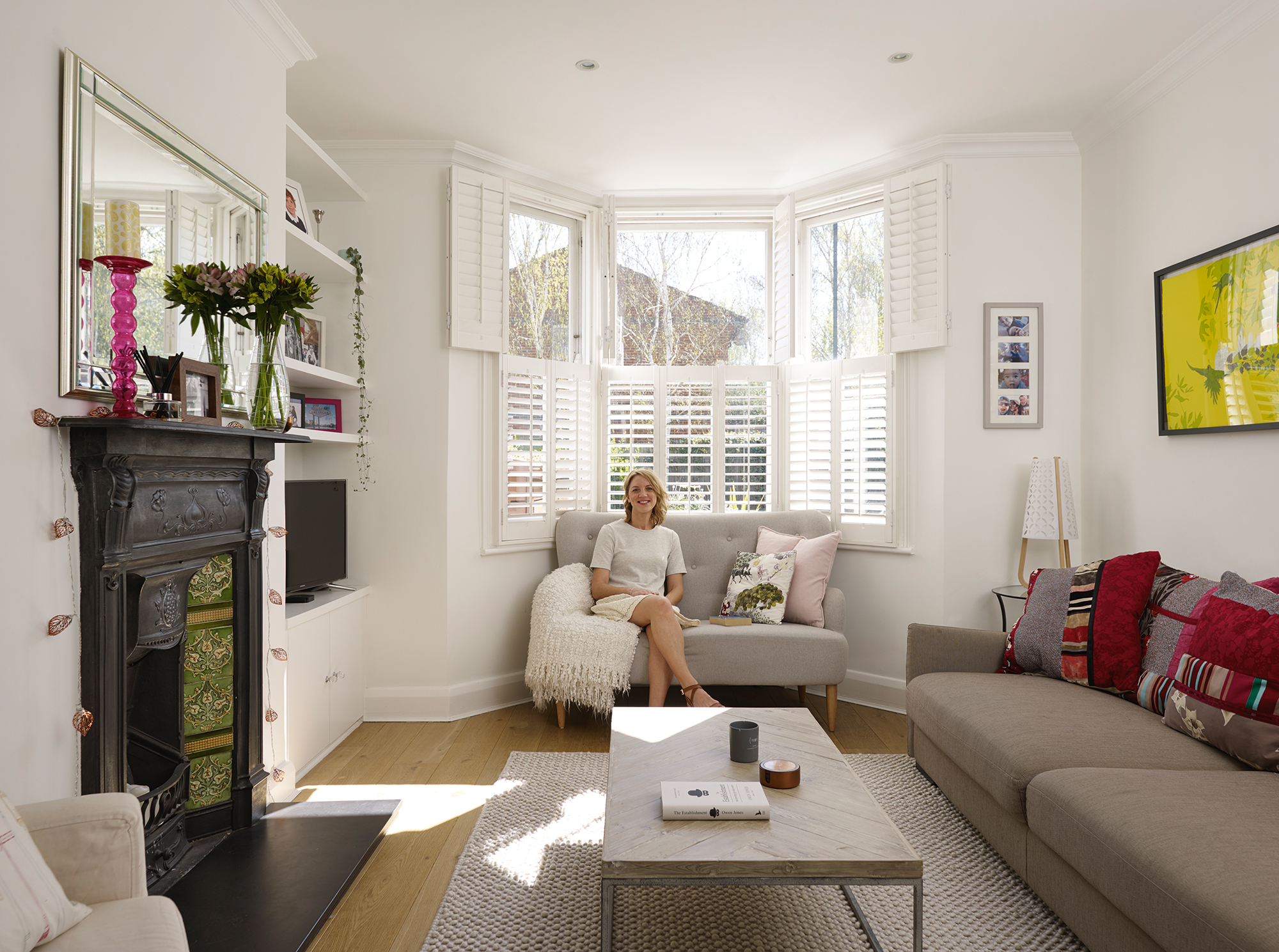
Helen says she absolutely loves the look of her renovated home
“He also had good contacts for the structural glazing and glass door so the pricing was good,” says Helen. “We particularly liked the style as we wanted narrow profiles that would allow for a seamless look.”
Helen and Jonny also decided late on in the project to take out the chimney breast.
“We didn’t realise how big it was and how far it would encroach into our bedroom,” says Helen. “It was a hard decision as it was an extra cost for the structural engineering calculations and steelwork. But we wanted to maximise the space and we weren’t using the fireplace in the bedroom or living room.”
As the project progressed, the Browns saw this as an opportunity to iron out other niggles and thoroughly update their house.
They decided to fit an integrated lighting and AV system as well as sort out the dark bottleneck in the hallway by angling off the wall opposite the stairs.
The staircase was entirely replaced to match the new unit that gives way to the loft, thus keeping a uniform look.
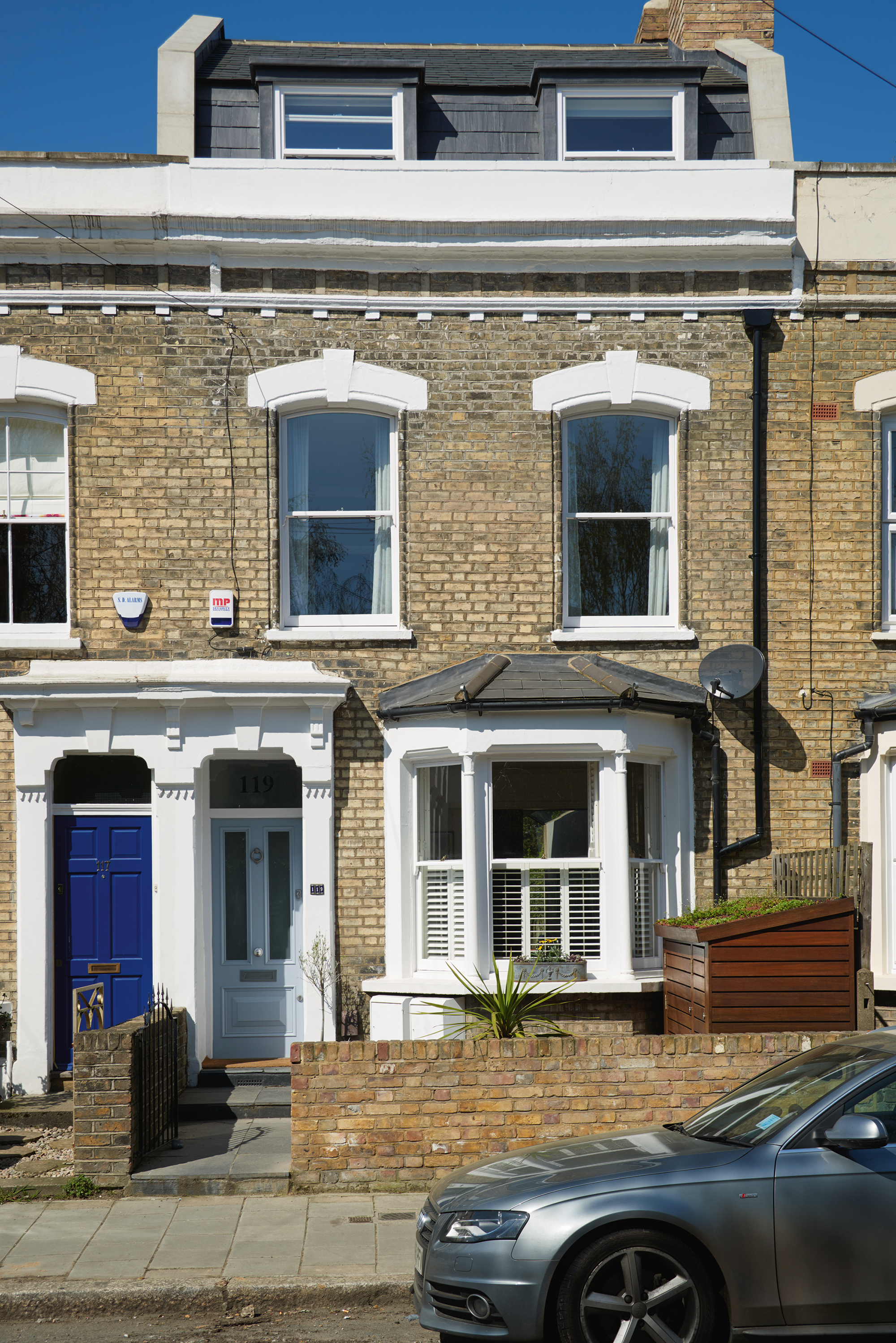
Thanks to changes to planning rules in the south London area, the couple were able to build a mansard extension
Once the builders had refurbished the original rooms – where floorboards had been lifted for the electrics and acrow props had gone in to keep the structure stable – the couple redecorated.
After seven months, in April 2017, the family moved back in. Helen says they’re delighted with the whole house, which has turned out far better than they imagined when they first started talking to Darren some two-and-a-half years before.
“If we’d gone with the original plan, then our house would’ve been bottom heavy and with less garden space,” says Helen.
“Our new scheme is much more balanced. I’m really pleased with Darren’s attention to detail and we absolutely love living here.”
